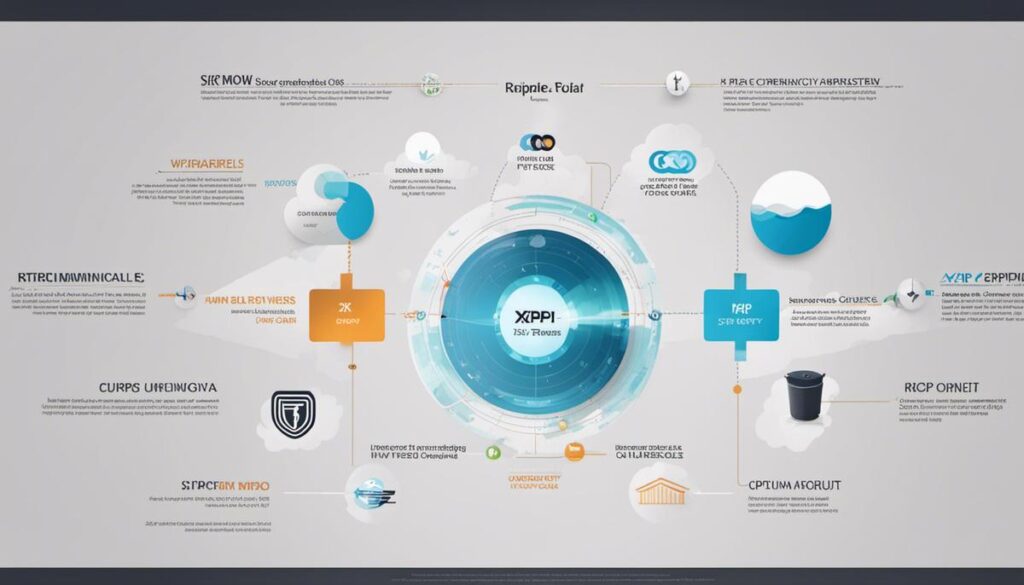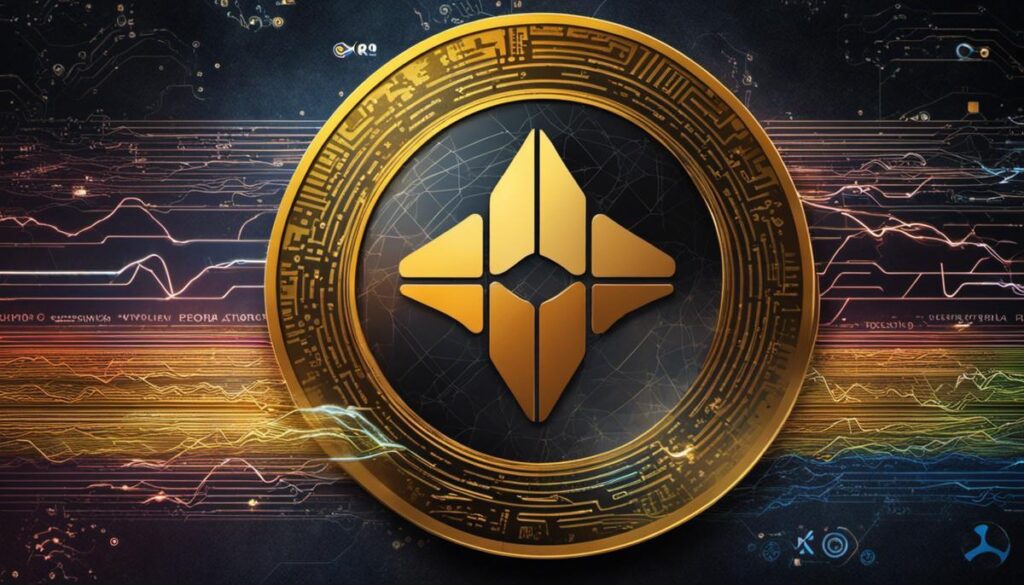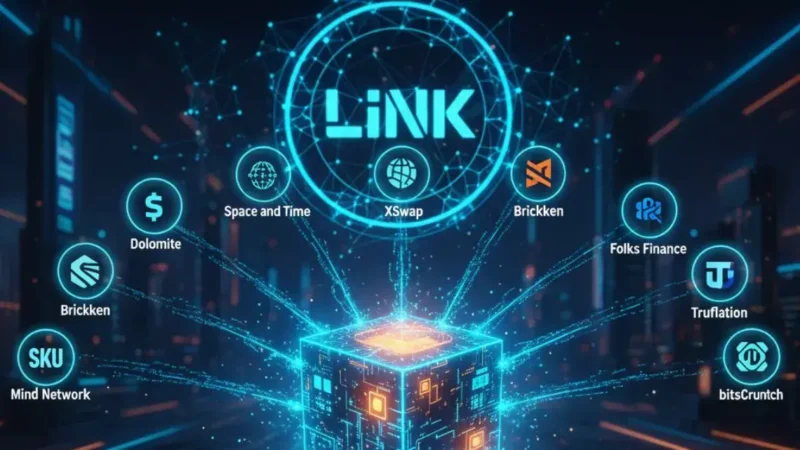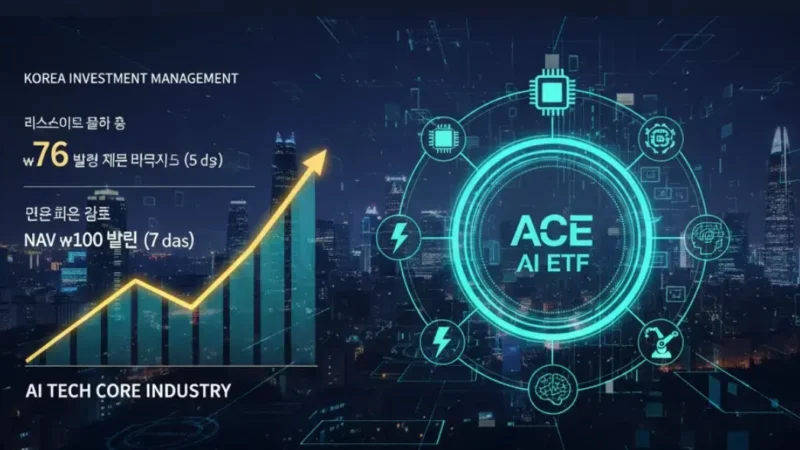Understanding Ripple and its Cryptocurrency, XRP
In a rapidly digitizing world, financial technologies are undergoing unprecedented innovation, with one of the most prominent gaining increasing attention: Ripple and its associated cryptocurrency, XRP. Launched in 2012, Ripple Labs Inc. has emerged as a driving force in the realm of digital finance, providing ground-breaking solutions for the complexities of international money transfers through its proprietary network, RippleNet. Ripple’s digital currency, XRP, a significant facet of this evolution, functions as both a cryptocurrency and a technology protocol that facilitates quick, affordable cross-border transactions. This exploration plunges into the identity, vision, and real-world applications of Ripple and XRP, along with a reflection on their potential future impact on the global economy.
Ripple: An Overview
Ripple: The Beginnings
Ripple was founded in 2012 to enable fast and low-cost international financial transactions. Chris Larsen and Jed McCaleb were its co-founders, with a vision to make a decentralized system where financial transactions could be made directly without the need for intermediaries like banks. The Ripple system is built on a blockchain that also has a digital token, the XRP, which is one of the top cryptocurrencies in terms of market capitalization.
Ripple: The Company
Ripple as a company serves as both a cryptocurrency (XRP) and a technology protocol. As a technological platform, it designs and develops free software that utilizes blockchain technology to enable faster, more secure transactions across the world’s financial networks. Ripple refers to both the digital payment protocol for financial transactions and the cryptocurrency. The RippleNet payment platform is a real-time gross settlement system (RTGS) that aims to enable instant, monetary transfers globally.
Ripple’s Significance in the Digital World
In the digital world, Ripple has been influential as it champions the use of blockchain technology in finance. The Ripple payment protocol is transformative, in that it allows banks, payment providers, digital asset exchanges, and corporate institutions to connect and transact instantly. The transfer of assets on this network is done using the XRP ledger, a blockchain that secures the network against spam and ensures all transactions are cryptographically signed.
Ripple’s Global Financial Problem Solving
One crucial problem that Ripple seeks to solve in the global financial arena is the slow and costly nature of international remittances. XRP has a solution for these, by leveraging its Digital Payment Protocol and XRP cryptocurrency to facilitate faster and cheaper remittances. Their solutions are particularly attractive in developing countries where the cost of remittances is high due to currency convertibility challenges.
What is XRP?
XRP is the digital asset native to the Ripple system. It functions as a bridge currency in the Ripple ecosystem and is designed to be a quick, less costly, and more scalable alternative to both other digital assets and existing monetary payment platforms. XRP can be sent directly without needing a central intermediary, making it a convenient instrument in bridging two different currencies quickly and efficiently.
The Role of XRP in Ripple’s Ecosystem
Within the Ripple ecosystem, XRP is used as a form of liquidity for banks. When conducting international transfers, it’s faster and more cost-efficient for banks to convert the funds into XRP and then send them overseas, rather than creating a direct and often costly monetary transaction. On the receiving side, the XRP is converted back into the local currency. This system allows for real-time transfers and significant cost reduction, thereby making Ripple’s XRP a key component in modern banking solutions.
The Ripple Criticisms and Challenges
Despite the utility that it offers, Ripple and its accompanying cryptocurrency, XRP, have not been without criticism. A primary sticking point for detractors lies in the fact that Ripple’s XRP is not mined, unlike many other cryptocurrencies. At the outset, 100 billion XRP tokens were created, with roughly 60% of these held by Ripple. This model has stirred debates on centralization, with critics arguing that Ripple wields excessive control over the XRP supply. Furthermore, there have been instances where regulators have suggested that XRP might be classified as a security, which would propose a stricter level of regulatory emphasis.

Understanding XRP: Ripple’s Digital Currency
Delving into XRP: Ripple’s Unique Digital Currency
Ripple Labs Inc., an innovative technology company focused on delivering real-time gross settlement system, currency exchange, and remittance network solutions, is the creator behind the XRP digital asset. The primary objective behind the inception of XRP was to foster quicker and safer cross-border transactions on a global scale.
XRP Operational Mechanism and Consensus Protocol
XRP operates on a technology known as the Ripple protocol consensus algorithm (RPCA). While most cryptocurrencies, like Bitcoin, use proof-of-work or proof-of-stake systems, XRP’s consensus protocol is unique. RPCA is based on majority agreement, not competition. In this protocol, nodes on the network communicate with one another to validate transactions, which ensures quick, unanimous agreement on the order in which operations have occurred.
This consensus protocol not only speeds up transaction times dramatically but it also avoids the high energy consumption problem plaguing Bitcoin and other mined cryptocurrencies.
Primary Application of XRP in the Ripple Ecosystem
XRP’s primary application within the Ripple ecosystem is as a bridge currency for transferring value between different fiat currencies. XRP is utilized in Ripple’s payment ecosystem, called RippleNet, to enable instant, direct transfers between two parties.
Through this system, any type of currency can be exchanged – from USD to Euros, to airline miles, or even other cryptocurrencies – and XRP serves as a bridge between these values to quickly settle transactions. This technology reduces the time and cost associated with cross-border transfers significantly, often rendering them near instantaneous.
The main product offering this service within the Ripple ecosystem is called “On-Demand Liquidity” (ODL). ODL uses XRP as real-time bridge currency to enable even more efficient cross-border transactions.
XRP Distribution and Usage in Real-world
Out of the 100 billion XRP coins created at inception, Ripple Labs owns more than half, causing concern among critics about the centralization of XRP. Ripple has steadily sold portions of its holdings over time and has also committed to not flooding the market to maintain its value.
In the real world, XRP is being used by multiple payment providers, such as Nium, formerly known as InstaReM, which use XRP to source liquidity on-demand when sending payments on behalf of their customers. American Express and Santander have also used Ripple’s blockchain, but not XRP, to streamline cross-border transactions.
Despite being a subject of controversy and legal scrutiny, XRP has gained recognition for its potential in not only revolutionizing cross-border transactions but also for the development of future applications in industries such as payments, micropayments, and the internet of value.
Comprehending XRP’s nature and its role in the expansive Ripple ecosystem is of utmost significance as it ceaselessly works to revolutionize the traditional and digital financial world through a transformed approach to global transactions.

RippleNet and its benefits
Deciphering RippleNet
RippleNet is a blockchain technology-based network comprised of institutional payment providers. This groundbreaking technology has been crafted and is presently managed by the tech giant, Ripple. The primary objective of RippleNet is to facilitate secure, real-time, and cost-effective international money transfers.
RippleNet serves as a decentralized, global consortium of banks and other financial institutions, guaranteeing smooth cross-border money transfers. The platform operates on a distributed ledger database, the XRP Ledger, which ensures the security and transparency of all transactions.
The constituents of RippleNet fall into two distinct classes: Network Members, or ‘enablers’, and Network Users, also known as ‘originators’. Enablers are licensed to issue IOUs (international or debt obligations) across public networks, while Originators specialize in their issuance within private or closed networks.
Unique Features and Benefits of RippleNet
Unlike traditional banking systems, RippleNet delivers a variety of unique features and benefits. One of its principal advantages is speed. While traditional bank transfers can take days, RippleNet reduces this to a few seconds, regardless of the location being sent to. This is a vital feature for companies conducting global transactions who need their operations to run as smoothly as possible.
Another advantage is the transparency in its operations. All members of the RippleNet network have access to a unified framework that minimally varies from one member to the other. This makes it easy to track transactions, identify potential issues, and reduce the likelihood of fraudulent activity.
Moreover, RippleNet offers significant cost savings. Traditionally, cross-border transactions involve fees and exchange rates. RippleNet, however, eliminates unnecessary intermediaries, leading to direct and more affordable transactions.
RippleNet’s Distinction from Other Networks
While other blockchain-based networks exist, RippleNet stands out for several reasons. Primarily, its unique consensus protocol enables faster and reliable transactions, differing from the commonly used proof-of-work system that Bitcoin utilizes.
Furthermore, unlike other cryptocurrencies, RippleNet and its digital currency, XRP, are geared more towards institutional use rather than individual. Specifically, they aim to streamline the cross-border transfer system between banks and other large financial institutions.
Real-Life Implementation of RippleNet
In terms of real-world application, RippleNet has already been embraced by more than 300 banks and payment providers globally, including PNC, Standard Chartered, SBI Holdings, and Santander, among others.
For instance, Santander uses RippleNet to power their OnePay FX service, offering their customers quicker and cheaper international transfers. Similarly, American Express and Santander have collaborated to use RippleNet to streamline cross-border non-card payments between the US and UK.
Primarily, RippleNet has brought an ingenious solution to the problem of cross-border transactions. It does this by offering features that superiority surpass those of conventional banking systems, making RippleNet a fascinating absolution for financial institutions globally. As the adaptation and evolution of blockchain technology progresses, there is every indication that the influence and user base of RippleNet will increasingly expand.

Critical Analysis of Ripple’s Impact on Global Transactions
Redefining Global Transactions: The Transformational Ripple and XRP
With their ground-breaking approach to global transactions, Ripple and its cryptocurrency, XRP, have significantly transformed the global financial framework. Ripple is an innovative real-time gross settlement system that also serves as a currency exchange and a cross-border remittance network. Running on a decentralized, peer-to-peer, open-source platform, Ripple allows for the seamless transfer of money in a multitude of forms, including USD, Yen, Litecoin, Bitcoin, and many more.
Ripple’s operations are centered around its unique digital currency, XRP. XRP not only operates as a cryptocurrency but also serves as a technological protocol that simplifies the process of cross-border transactions. By leveraging Ripple’s infrastructure, financial institutions have been able to provide customers with instant, reliable, and cost-effective methods of payment anywhere in the world. This is a considerable shift from older international remittance methods such as SWIFT, known for their slow, expensive, and often non-transparent processes.
The beauty of XRP lies in its capability to serve as a bridge currency in facilitating transactions between different currencies, thereby eliminating the need for all financial institutions to establish direct relationships with one another.
Ripple’s Disruption in the Global Financial Sector
Ripple’s contribution to the global financial ecosystem extends to more than just facilitating rapid and affordable transactions. Its blockchain infrastructure allows for a considerable degree of transparency, a feature typically lacking in the traditional financial systems. This has reduced the risks of fraud and financial misdeeds, enhancing trust among stakeholders.
Furthermore, Ripple’s XRP holds the promise of providing liquidity to banks. By reducing the need for nostro and vostro accounts—special kinds of accounts that banks maintained with each other for facilitating international transactions—XRP can free up significant capital that banks would typically need to have locked up.
The Controversies, Legal Challenges, and Ripple
Despite its undeniable impact, Ripple has not been without controversy. Central to these controversies is the question of whether XRP, the crypto-asset that powers the Ripple network, constitutes a security. The Securities and Exchange Commission (SEC) in the United States has alleged that XRP is a security and that Ripple’s sale of XRP amounted to an unregistered securities offering.
This legal battle has had implications on XRP’s operations in the United States, with many U.S-based crypto-exchanges suspending XRP trading pending the outcome of the lawsuit. Ripple, however, maintains that XRP is not a security, but a digital asset.
Despite the legal uncertainties surrounding the status of XRP, its impact on the global financial ecosystem cannot be denied. Backed by a robust infrastructure capable of revolutionizing global transactions, the Ripple network, fueled by XRP, tirelessly strives to reshape the international monetary landscape, successfully navigating legal and operational hurdles in its path.

Future of Ripple and XRP
An Introduction to Ripple and XRP
Ripple serves as an innovative digital payment system tailored to enable swift and cost-effective international money transfers. Primarily conceived for financial institutions and payment service providers, Ripple revolutionizes the conventional way of sending and receiving money worldwide. XRP, which is the proprietary digital asset of the Ripple network, plays an essential role in expediting transactions on the platform.
Predictions for Ripple and XRP
Many experts in the financial and cryptocurrency sectors predict a bright future for both Ripple and XRP. This positive outlook is primarily due to Ripple’s potential to revolutionize the way international money transfers are made. Financial institutions stand to greatly benefit from Ripple’s ability to process cross-border transactions within seconds, not to mention the cost savings involved due to low transaction fees.
As for XRP, it’s held in high regard due to its integral role in the functioning of the Ripple network. As the demand for Ripple’s services grows, the value of XRP is also expected to rise. Some experts have gone as far as to predict that XRP could eventually become one of the top cryptocurrencies, given Ripple’s potential to disrupt traditional banking systems.
Challenges Ahead for Ripple and XRP
While the prospects look promising, Ripple and XRP do face a number of challenges. One major challenge is regulatory uncertainty. Cryptocurrencies are still a relatively new phenomenon, and governments around the world are still grappling with how to regulate them.
In the U.S., Ripple is currently embroiled in a lawsuit with the Securities and Exchange Commission (SEC) over whether XRP qualifies as a security. The outcome of this lawsuit could greatly influence the future of both Ripple and XRP, as it may impact how they are regulated, and in turn, adopted by financial institutions.
Another potential challenge relates to competition. Various other digital payment platforms and cryptocurrencies are vying for market share in the fast-paced digital economy, which could hinder Ripple and XRP’s growth.
The Potential of Ripple and XRP
While the challenges cannot be ignored, the potential held by Ripple and XRP in the evolving digital economy remains significant. The speed and low cost of transactions enabled by Ripple’s technology opens up the possibility of it being widely used for international money transfers, providing a more efficient alternative to the existing SWIFT system used by most banks and financial institutions.
Furthermore, with more businesses and even governments showing interest in digital payments and cryptocurrencies, the demand for innovative solutions like Ripple could potentially soar. This, in turn, could drive up the value of XRP.
In conclusion
The future of Ripple and XRP looks promising, but it largely hinges on how they navigate forthcoming regulatory processes and competition in the digital payments landscape.

Ripple and XRP’s journey is a testament to the significant strides moving beyond conventional financial systems. Understanding Ripple’s financial technology platforms and its digital currency gives critical perspective on its revolutionizing role in global transactions, cementing its place at the forefront of the fintech industry. Looking forward, the potential held by Ripple and XRP to catalyze a more inclusive, efficient, and transparent financial landscape is immense. However, their trajectory is not without challenges. From legal woes to fierce market competition, Ripple’s future stands on shifting sands. Yet, no matter the direction it takes, Ripple’s continued evolution is an exhilarating watch in the chronicles of digital finance.




